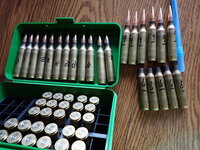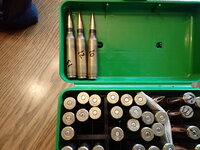nhenry
Handloader
- Feb 7, 2022
- 583
- 987
Didn't used to worry so much, but ever since diving into the reloading game headfirst I've been scared to load different times fired brass in the same batch as others - so in other words I haven't loaded twice fired with once or thrice fired.
How much does it actually matter if I FL size all my brass anyways?
How much does it actually matter if I FL size all my brass anyways?







